Amresco 0449-25G BROMOPHENOL BLUE 溴酚蓝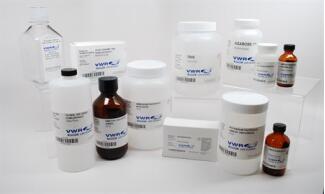
日度归档:2024年3月10日
液基细胞保存液 细胞保存液 TCT保存液
|
用途
|
包装规格
|
数量
|
|
保存
|
细胞保存液(10ml)
|
100瓶
|
|
辅助配件
|
制片染色舱(含载玻片)
|
100个
|
|
巴氏吸管
|
100支
|
|
|
采样器
|
100支
|
|
|
申请单
|
100张
|
|
用途
|
包装规格
|
数量
|
|
保存
|
细胞保存液(10ml)
|
200瓶
|
|
辅助配件
|
制片染色舱(含载玻片)
|
200个
|
|
巴氏吸管
|
200支
|
|
|
采样器
|
200支
|
|
|
申请单
|
200张
|
|
宫颈细胞
|
用一次性宫颈刷采集宫颈细胞标本:大拇指和食指捏住刷柄,将宫颈刷尖伸入宫颈口内朝一个方向旋转3-5周,抽出宫颈刷,卸下刷头放入装有10ml固定保存液的小瓶中(如果病人宫颈上的粘液或分泌物较多时,应先用棉球擦拭后再采样)。瓶签上注明病人姓名、年龄和门诊(住院)号。
|
|
痰细胞
|
病人先清除口内唾液、咽喉分泌物和食物残渣,再从肺部深处用力咳出痰液至本公司提供的细胞保存液瓶内,旋紧瓶盖,颠倒混匀。瓶签上注明病人姓名、年龄和门诊(住院)号。如条件允许,请使用雾化生理盐水吸入促进排痰。
|
|
胸腹水、尿液
|
取病人的胸腹水或尿液标本室温静置半小时,使细胞自然沉降。从瓶底吸取10-50ml液体,2000转/分,离心4分钟,如液体含血较多,则离心液可分成三层,此时吸取第二层液体(清亮液体与血液交界处);如离心后血液很少,则迅速倒掉清亮液体,再将离心管竖立,待管壁液体自然回流至管底部后,混匀,并吸入保存液中。瓶签上注明病人姓名、年龄和门诊(住院)号。
|
|
【警告】本试剂用于体外分析检测,不可用于人体或动物内服外用。若吞食可导致严重事件;对眼睛和皮肤有一定的刺激性,若不慎溅入眼睛即用清水冲洗。使用时应当保持通风。
|
康宁corning 4514 PLT,384W,LOW VOLUME,BLK,UB,NBS,WO/LID,NS,BK,10/50 10个/包
康宁corning 4514 PLT,384W,LOW VOLUME,BLK,UB,NBS,WO/LID,NS,BK,10/50 10个/包 5包/箱 6297.19
日本柴田SIBATA 官方网站
日本柴田SIBATA 官方网站

Whatman 滤膜 10347033 8标准滤纸,圆片,75mm/100
Whatman 滤膜 10347033 8标准滤纸,圆片,75mm/100 8 RULED 75MM 100/PK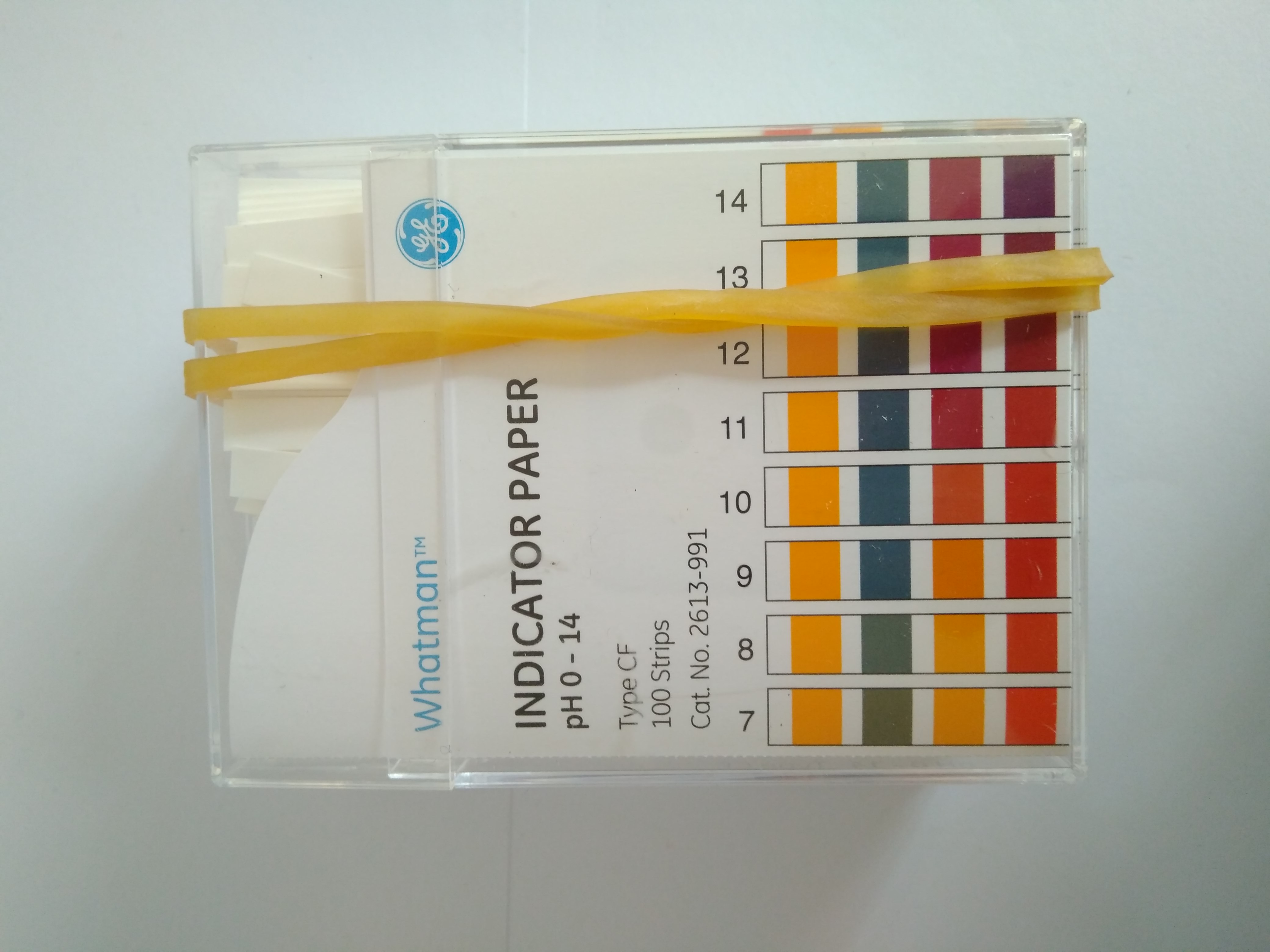
康宁corning 3283 CAP,33mm CellSTACK FILLING ACC33mm 加样盖 灭菌 1个/包
康宁corning 3283 CAP,33mm CellSTACK FILLING ACC33mm
加样盖 灭菌 1个/包 5包/箱 3892.06
BD培养基 255320 500 g EA Difco Microbial Content Test Agar(Trypticase Soy Agar with Lecithin and Polysorbate 80) 微生物含量测试琼脂
BD培养基 255320 500 g EA Difco Microbial Content Test Agar(Trypticase Soy Agar with Lecithin and Polysorbate 80) 微生物含量测试琼脂 
Whatman 滤膜 10401106 NC45硝酸纤维素膜,圆型, 0.45m 25mm 100/盒
Whatman 滤膜 10401106 NC45硝酸纤维素膜,圆型, 0.45m 25mm 100/盒 NC45 0.45uM 25MM 100/PK
Amresco 0224-25G BIEBRICH SCARLET 比布里希猩红(猩红B)
Amresco 0224-25G BIEBRICH SCARLET 比布里希猩红(猩红B)
山梨醇/木糖醇检测试剂盒 D-Sorbitol/Xylitol Assay Kit 货号:K-SORB Megazyme中文站
山梨醇/木糖醇检测试剂盒
英文名:D-Sorbitol/Xylitol Assay Kit
货号:K-SORB
规格:58 assays (manual) / 580 assays (microplate)
分析物意义: 食品中常见的增甜剂有阿斯巴甜、D-甘露醇、D-山梨醇和木糖醇
Megazyme检测试剂盒优点:K-SORB- 提供的硫辛安脱氢酶是稳定的悬浮液而不是可溶性粉末,从而减少酶的浪费
The D-Sorbitol/Xylitol test kit is suitable for the measurement and analysis of D-sorbitol and/or xylitol in food products.
Suitable for manual, auto-analyser and microplate formats.
Colourimetric method for the determination of D-Sorbitol and
Xylitol in foodstuffs and wine
Principle:
(sorbitol dehydrogenase)
(1) D-Sorbitol + NAD+ ↔ D-fructose + NADH + H+
(sorbitol dehydrogenase)
(2) Xylitol + NAD+ ↔ D-xylulose + NADH + H+
(diaphorase)
(3) INT + NADH + H+ → NAD+ + INT-formazan
Kit size: 58 assays (manual) / 580 (microplate)
/ 700 (auto-analyser)
Method: Spectrophotometric at 492 nm
Reaction time: ~ 15 min
Detection limit: 0.20 mg/L
Application examples:
Diabetic foods (e.g. honey, jam and chocolate), dietetic foods,
chewing gum, candies, fruit juice (e.g. apple juice), ice-cream, sweets,
bakery products (e.g. desserts), marzipan, paper (and cardboard),
cosmetics, pharmaceuticals and other materials (e.g. biological cultures,
samples, etc.)
Method recognition:
Methods based on this principle have been accepted by IFU and AIJN
Advantages
- Each vial of sorbitol dehydrogenase is stable for > 2 months at 4°C after dissolution
- No wasted diaphorase solution (stable suspension supplied)
- Very competitive price (cost per test)
- Reagents stable for > 2 years as supplied
- Mega-Calc™ software tool is available from our website for hassle-free raw data processing
- Standard included
- Suitable for manual, microplate and auto-analyser formats
Q1. Should the pH of the sample be adjusted even for samples in acidic media?
The pH of the assay solution after the sample is added should be the same as that of the assay buffer that is supplied with the kit.
Low sample volumes (e.g. 0.1 mL) are not likely to affect the pH of the assay solution and therefore may not require pH adjustment.
Samples above 0.1 mL are more likely to affect the pH of the assay solution and therefore the pH of these samples should be adjusted as described in the data booklet, prior to addition to the assay.
Q2. There is an issue with the performance of the kit; the results are not as expected.
If you suspect that the Megazyme test kit is not performing as expected such that expected results are not obtained please do the following:
Ensure that you have tested the standard sample that is supplied with the Megazyme test kit.
Send the results of the kit standard, blank samples and the results obtained for your sample, in the relevant MegaCalc spreadsheet (if available) to Megazyme (cs@megazyme.com). Where available the relevant MegaCalc spreadsheet can be downloaded from where the product appears on the Megazyme website.
State the kit lot number being used (this is found on the outside of the kit box).
State which assay format was used (refer to the relevant page in the kit booklet if necessary).
State exact details of any modifications to the standard procedure that is provided by Megazyme.
State the sample type and describe the sample preparation steps if applicable.
Deproteinisation
Deproteinisation with perchloric acid:
1 M Perchloric acid: [Sigma Cat No. 244252; MW 100.46; d = 1.664 (g/mL); 16.56 M]
Add 6 mL perchloric acid to 94 mL of distilled water and mix thoroughly.
1 M potassium hydroxide: (Sigma Cat No. 60369; MW 56.11; 86% assay)
Add 6.5 g of potassium hydroxide pellets to approximately 80 mL of distilled water and stir to dissolve. Make to 100 mL with distilled water.
Deproteinise samples containing protein by adding an equal volume of ice-cold 1 M perchloric acid with mixing. Filter or centrifuge at 1,500 g for 10 min and adjust the pH of the supernatant to between 7 and 8 with 1 M KOH. Use the supernatant in the assay after appropriate dilution. Alternatively, use trichloroacetic acid.
Deproteinisation with trichloroacetic acid:
50% (w/v) trichloroacetic acid (approx. 3 M): (Sigma Cat No. 33731; MW 163.39)
Add 50 g of trichloroacetic acid to approximately 80 mL of distilled water and stir to dissolve. Make to 100 mL with distilled water.
Q3. How can I work out how much sample to extract and what dilution of my sample should be used in the kit assay?
Where the amount of analyte in a liquid sample is unknown, it is recommended that a range of sample dilutions are prepared with the aim of obtaining an absorbance change in the assay that is within the linear range.
Where solid samples are analysed, the weight of sample per volume of water used for sample extraction/preparation can be altered to suit, as can the dilution of the extracted sample prior to the addition of the assay, as per liquid samples.
Q4. The pH of my sample is low (pH ~ 3.0), do I need to adjust this before I use the sample in the kit assay?
The final pH of the kit assay after the sample is added should not change from what it should be (as stated in the kit for the assay buffer). If it does change then the sample will require pH adjustment. In most cases the sample volume being used is low relative to the final assay volume and in this case the pH of the kit assay is unlikely to be affected.
Q5. Can you explain, step by step, how to follow the method and perform the kit assay?
For users who are not familiar with how to use the Megazyme tests kits then it is recommended that they follow this example, e.g. D-Fructose/D-Glucose Assay kit K-FRUGL (http://secure.megazyme.com/D-Fructose-D-Glucose-Assay-Kit):
1. The kit components are listed on pages 2-3 of the kit booklet.
2. Prepare the kit reagents as described on page 3.
3. For separate measurements of glucose and fructose follow procedure A on page 4.
4. Pipette the volumes listed for water, sample, solution 1 and solution 2 into 3 mL, 1 cm pathlength cuvettes. Duplicate sample assays and duplicate blanks are recommended. Mix the contents of each cuvette by inversion (seal the cuvette using parafilm or a plastic cuvette cap – do not use a finger) then after ~3 min record the first absorbance reading of each cuvette at 340 nm (this is reading A1).
5. Then add suspension 3 and mix the contents of each cuvette by inversion. Incubate for 5 minutes then record the absorbance reading of each cuvette at 340 nm (this is reading A2). NB. It is essential that the reaction is compete. To assess this, record the absorbances at ~ 2 minute intervals and until the absorbance plateaus. A stable absorbance indicates that the reaction is complete. If the absorbance continues to increase then continue to record absorbances until it plateaus and only then record absorbance reading A2.
6. Then add suspension 4 and mix the contents of each cuvette by inversion. Incubate for 5 minutes then take absorbance reading of each cuvette at 340 nm (this is reading A3). NB. As above, assess that the reaction has completed by take subsequent readings at ~2 min intervals.
7. For simple, automated results analysis, input the absorbance readings (A1, A2, A3) for samples and blanks into the K-FRUGL MegaCalc.
To ensure that the assay is working, and being performed correctly it is recommend that the test is performed using the standard sample that is provided with the kit and to obtain the expected values before proceeding to test real samples.
It is recommend that new users also watch this video which highlights how to perform the assays.
Many of the other Megazyme test kits follow a similar format.
Q6. I have some doubts about the appearance/quality of a kit component what should be done?
If there are any concerns with any kit components, the first thing to do is to test the standard sample (control sample) that is supplied with the kit and ensure that the expected value (within the accepted variation) is obtained before testing any precious samples. This must be done using the procedure provided in the kit booklet without any modifications to the procedure. If there are still doubts about the results using the standard sample in the kit then send example results in the MegaCalc spread sheet to your product supplier (Megazyme or your local Megazyme distributor).
Q7. Can the test kit be used to measure biological fluids and what sample preparation method should be used?
The kit assay may work for biological fluids assuming that inositol is present above the limit of detection for the kit after any sample preparation (if required). Centrifugation of the samples and use of the supernatant directly in the kit assay (with appropriate dilution in distilled water) may be sufficient. However, if required a more stringent sample preparation method may be required and examples are provided at the following link:http://www.megazyme.com/docs/analytical-applications-downloads/biological_samples_111109.pdf?sfvrsn=2
The test kit has not been tested using biological fluids as samples because it is not marketed or registered as a medical device. This will therefore require your own validation.
Q8. Can the manual assay format be scaled down to a 96-well microplate format?
The majority of the Megazyme test kits are developed to work in cuvettes using the manual assay format, however the assay can be converted for use in a 96-well microplate format. To do this the assay volumes for the manual cuvette format are reduced by 10-fold. The calculation of results for the manual assay format uses a 1 cm path-length, however the path-length in the microplate is not 1 cm and therefore the MegaCalc spreadsheet or the calculation provided in the kit booklet for the manual format cannot be used for the micropalate format unless the microplate reader being used can.
There a 3 main methods for calculation of results using the microplate format:
- The easiest method is to use a microplate reader that has a path-length conversion capability (i.e. the microplater reader can detect the path-length of each well and convert the individual readings to a 1 cm path-length). This will allow values to be calculated using the MegaCalc calculation software which can be found where the product is located on the Megazyme website.
- Perform a standard curve of the analyte on each microplate that contains test samples and calculate the result of the test samples from the calibration curve (concentration of analyte versus absorbance).
- Perform a standard curve of the analyte in both the cuvette format (i.e. with a 1 cm path-length) and the 96-well microplate format and use these results to obtain a mean conversion factor between the cuvette values and the microplate values. Subsequent assays in the microplate format can then be converted from the calculated conversion factor.
Q9. Can the sensitivity of the kit assay be increased?
For samples with low concentrations of analyte the sample volume used in the kit assay can be increased to increase sensitivity. When doing this the water volume is adjusted to retain the same final assay volume. This is critical for the manual assay format because the assay volume and sample volume are used in the calculation of results.
Q10. When using this kit for quantitative analysis what level of accuracy and repeatability can be expected?
The test kit is extremely accurate – at Megazyme the quality control criteria for accuracy and repeatability is to be within 2% of the expected value using pure analytes.
However, the level of accuracy is obviously analyst and sample dependent.
Q11. Is it possible to add a larger volume then 2 μL of enzyme to the microplate assay? In some instances 2 μL can be difficult to pipette manually.
Yes, instead of adding 2 μL of enzyme suspension an alternative is to dilute the enzyme and add a larger volume to the microplate assay.
Dilute the assay buffer 10-fold with distilled water and use this as the diluent to dilute an aliquot of the enzyme suspension also by 10-fold. Instead of 2 μL, use 20 μL of the diluted enzyme in the microplate assay.
Q12. Absorbance values of my sample reactions continue to increase slowly after the reaction should be complete. Is there an explanation for this?
Some samples can react with the INT in the assay and cause a non-enzymatic creep reaction.
The 3rd worksheet in the MegaCalc is used to account for any creep reaction in your results.
Q13. Must the minimum absorbance change for a sample always be at least 0.1?
No. The 0.1 change of absorbance is only a recommendation. The lowest acceptable change in absorbance can is dictated by the analyst and equipment (i.e. pipettes and spectrophotometer) and therefore can be can be determined by the user. With accurate pipetting, absorbance changes as low as 0.02 can be used accurately.
If a change in absorbance above 0.1 is required but cannot be achieved due to low concentrations of analyte in a sample, this can be overcome by using a larger sample volume in the assay to increase the absorbance change and thereby increase sensitivity of the assay. When doing this the increased volume of the sample should be subtracted from the distilled water volume that is added to the assay so that the total assay volume is unaltered. The increase sample volume should also be accounted for when calculating final results.
Q14. Can the sensitivity of the kit assay be increased?
Yes. Samples with the lower concentrations of analyte will generate a lower absorbance change. For samples with low concentrations of analyte, a larger sample volume can be used in the assay to increase the absorbance change and thereby increase sensitivity of the assay. When doing this the increased volume of the sample should be subtracted from the distilled water volume that is added to the assay so that the total assay volume is unaltered. The increase sample volume should also be accounted for when calculating final results.
Axygen P-DW-20-C-S 2.0ml圆孔深孔板(灭菌) 5块/包,10包/箱
Axygen P-DW-20-C-S 2.0ml圆孔深孔板(灭菌) 5块/包,10包/箱 2755.71 
荧光染料34260 Long trebler phosphoramidite 500 mg
lumiprobe荧光染料34260 Long trebler phosphoramidite 500 mg lumiprobe荧光染料Long trebler phosphoramidite 500 mg 350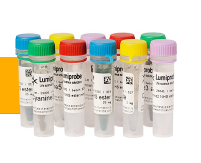
康宁corning 40070 ULTRAGAPS SLIDES WITH BLANK BA ULTRAGAPS包被载玻片 有空白条形码 25个/包
康宁corning 40070 ULTRAGAPS SLIDES WITH BLANK BA
ULTRAGAPS包被载玻片 有空白条形码 25个/包 1包/箱 8992.25
康宁corning 3342 PLT,SQ.384W,VB,PP,DEEP WELL PL 384孔板 方型 V型底 PP(聚丙烯)材质 深孔 灭菌 10个/包
康宁corning 3342 PLT,SQ.384W,VB,PP,DEEP WELL PL
384孔板 方型 V型底 PP(聚丙烯)材质 深孔 灭菌 10个/包 5包/箱 4717.68
BD培养基 244010 2 kg EA Difco 2xYT 2XYT培养基
BD培养基 244010 2 kg EA Difco 2xYT 2XYT培养基 
BD培养基 211822 2 kg EA Bacto Tryptic Soy Broth (Soybean-Casein Digest Medium) 胰蛋白大豆肉汤
BD培养基 211822 2 kg EA Bacto Tryptic Soy Broth (Soybean-Casein Digest Medium) 胰蛋白大豆肉汤 
Stemfull低吸附15mL离心管
| 产品编号 | 产品名称 | 产品规格 | 产品等级 | 产品价格 |
| MS-90150Z | Stemfull低吸附15mL离心管 | 100个 | – | – |
Stemfull低吸附15mL离心管

◆优点・特色
● 对干细胞等吸附性强的细胞株可发挥极大的效果.
● 基质表面经稳定的化学结合表面处理,不会溶出处理液。
● 透明度高,可进行高效离心分离和回收操作。
● 本产品已使用放射线灭菌。
|
产品编号 |
产品名称 |
材质 |
容量 |
包装 |
|
MS-90150Z |
Stemfull低吸附15mL离心管
|
管:PET 盖:聚乙烯 |
15mL |
500包/箱 |
REFINED STEARIC ACID 450V 硬脂酸 面霜、洗剂、唇膏等化妆品中的油基。肥皂、脂中的原料。铅笔中的原料。
REFINED STEARIC ACID 450V
规格
| 化学名称 | 硬脂酸 |
|---|---|
| 国际化妆品成分名 | 硬脂酸 |
| 外观 | 薄片 |
| 碳链组成 | C16:55%, C18:45% |
| 色度 | 50>(Melt,APHA) |
| 熔点(℃) | 54-58 |
| 酸值 | 207-211 |
| 酯值 | 3> |
| 碘值 | 1> |
| 应用 | 面霜、洗剂、唇膏等化妆品中的油基。肥皂、脂中的原料。铅笔中的原料。 |
| 特性 | 无色无味无杂质的适用于化妆品中特殊的提纯产品。 |
| 生产地区 | 亚洲 |
| 包装 | 20千克/袋 |
OXOID培养基 CM0533B 改良SS琼脂 S S AGAR (MODIFIED) 500G
OXOID培养基 CM0533B 改良SS琼脂 S S AGAR (MODIFIED) 500G 715.3383456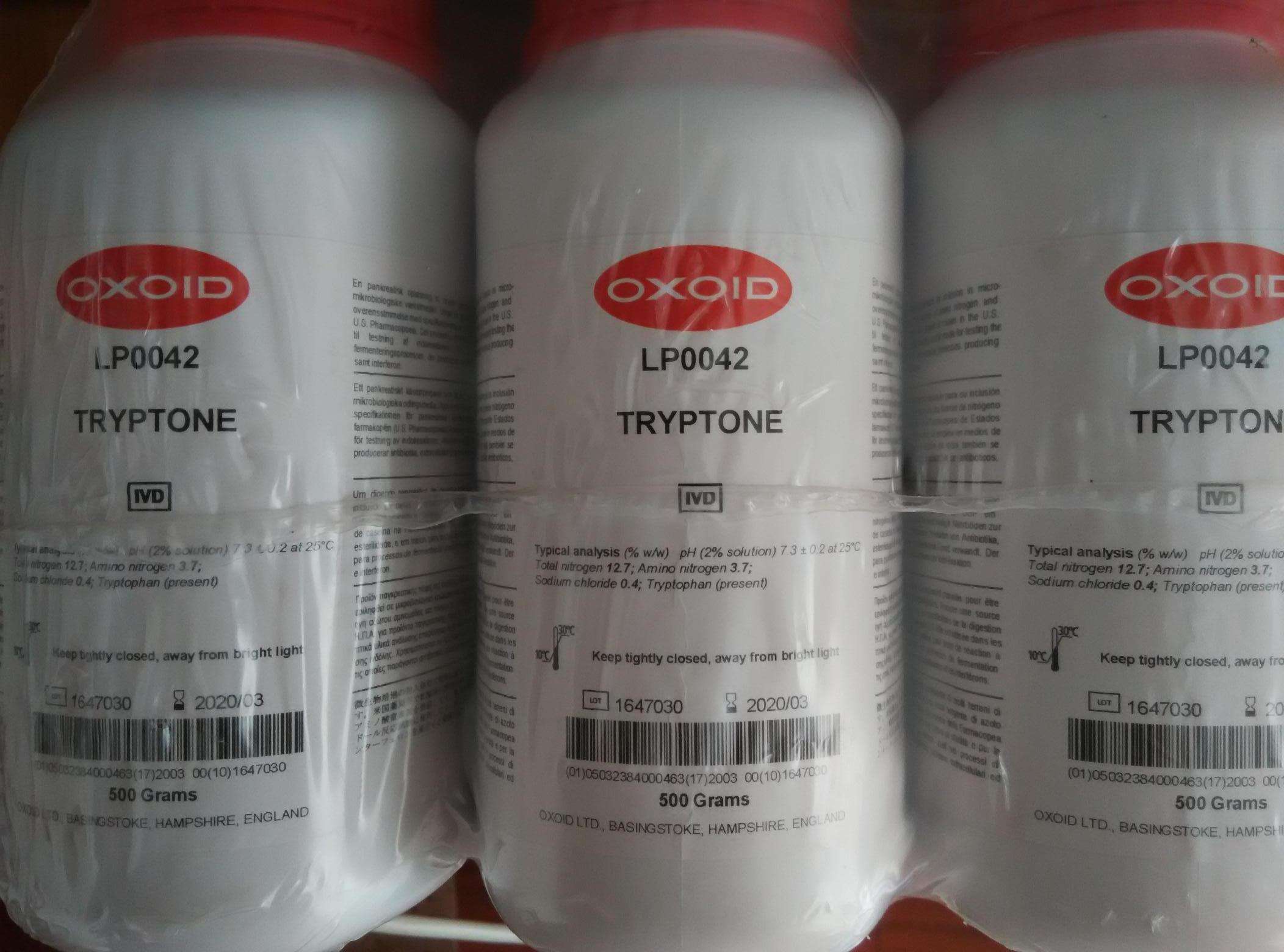
Azo-果聚糖+外切菊粉酶2克 Azo-Fructan+exo-Inulinanase 2g 货号:S-AZFRXOI Megazyme中文站
Azo-果聚糖+外切菊粉酶2克
英文名:Azo-Fructan+exo-Inulinanase 2g
货号:S-AZFRXOI
规格:2 grams + 4000 Units of pure exo-inulinase
A substrate for the specific assay of endo-inulinase.
内切型菊粉酶特殊检测底物
PDF Download
暂无问题解答
暂无视频
Amresco 0348-1KG SODIUM PHOSPHATE, DIBASIC, HEPTAHYDRATE 磷酸氢二钠,七水
Amresco 0348-1KG SODIUM PHOSPHATE, DIBASIC, HEPTAHYDRATE 磷酸氢二钠,七水
Axygen试剂盒 AP-MN-MS-RNA-50G AxyPrep 总RNA小量制备试剂盒
Axygen试剂盒 AP-MN-MS-RNA-50G AxyPrep 总RNA小量制备试剂盒 50 prep 盒 1050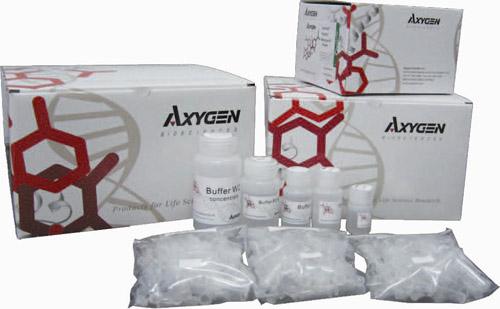
nunc 3301 Rack for 1-1.4mL 96WayTubes, Side
nunc 3301 Rack for 1-1.4mL 96WayTubes, Side
康宁corning 7023 CellSTACK(R),CellBIND(R),2-STA CellBIND表面2层培养室 1个/包
Amresco 0245-1KG EDTA TETRASODIUM SALT ANHYDROUS 乙二胺四乙酸四钠,无水
Amresco 0245-1KG EDTA TETRASODIUM SALT ANHYDROUS 乙二胺四乙酸四钠,无水
1,4-b-D-半乳糖内切酶[芽孢杆菌] endo-1,4-β-Galactanase (Cellvibrio japonicus) 货号:E-GALCJ Megazyme中文站
1,4-b-D-半乳糖内切酶[芽孢杆菌]
英文名:endo-1,4-β-Galactanase (Cellvibrio japonicus)
货号:E-GALCJ
规格:1500 Units
High purity recombinant endo-1,4-beta-Galactanase (Cellvibrio japonicus) for use in research, biochemical enzyme assays and in vitro diagnostic analysis.
EC 3.2.1.89
CAZy Family: GH53
Recombinant. Native full-length Gal53 from Cellvibrio japonicus.
In 3.2 M ammonium sulphate.
Specific activity: ~ 100 U/mg (40oC, pH 8.0 on potato galactan).
Stability: > 2 years at 4oC.
暂无问题解答
暂无视频
Whatman 滤膜 US503NPUPP MiniUniPrep非针头滤器SlitSepta0.45m聚丙烯/1000
Whatman 滤膜 US503NPUPP MiniUniPrep非针头滤器SlitSepta0.45m聚丙烯/1000 MUP SS 0.45uM PP 1000/PK
鼠李聚糖半乳糖醛酸水解酶和裂解酶检测底物 AZCL-Rhamnogalacturonan I – 2grams 货号:I-AZRHI Megazyme中文站
鼠李聚糖半乳糖醛酸水解酶和裂解酶检测底物
英文名:AZCL-Rhamnogalacturonan I – 2grams
货号:I-AZRHI
规格:2g
鼠李聚糖半乳糖醛酸水解酶和裂解酶检测底物
PDF Download
暂无问题解答
暂无视频
康宁corning 430293 DISH,100X20MM,TCT,PS,S,BK,10/4 培养皿100X20MM 带格 TC表面 PS(聚苯乙烯)材质 灭菌 大包装 10个/包
康宁corning 430293 DISH,100X20MM,TCT,PS,S,BK,10/4
培养皿100X20MM 带格 TC表面 PS(聚苯乙烯)材质 灭菌 大包装 10个/包 48包/箱 3401.14


